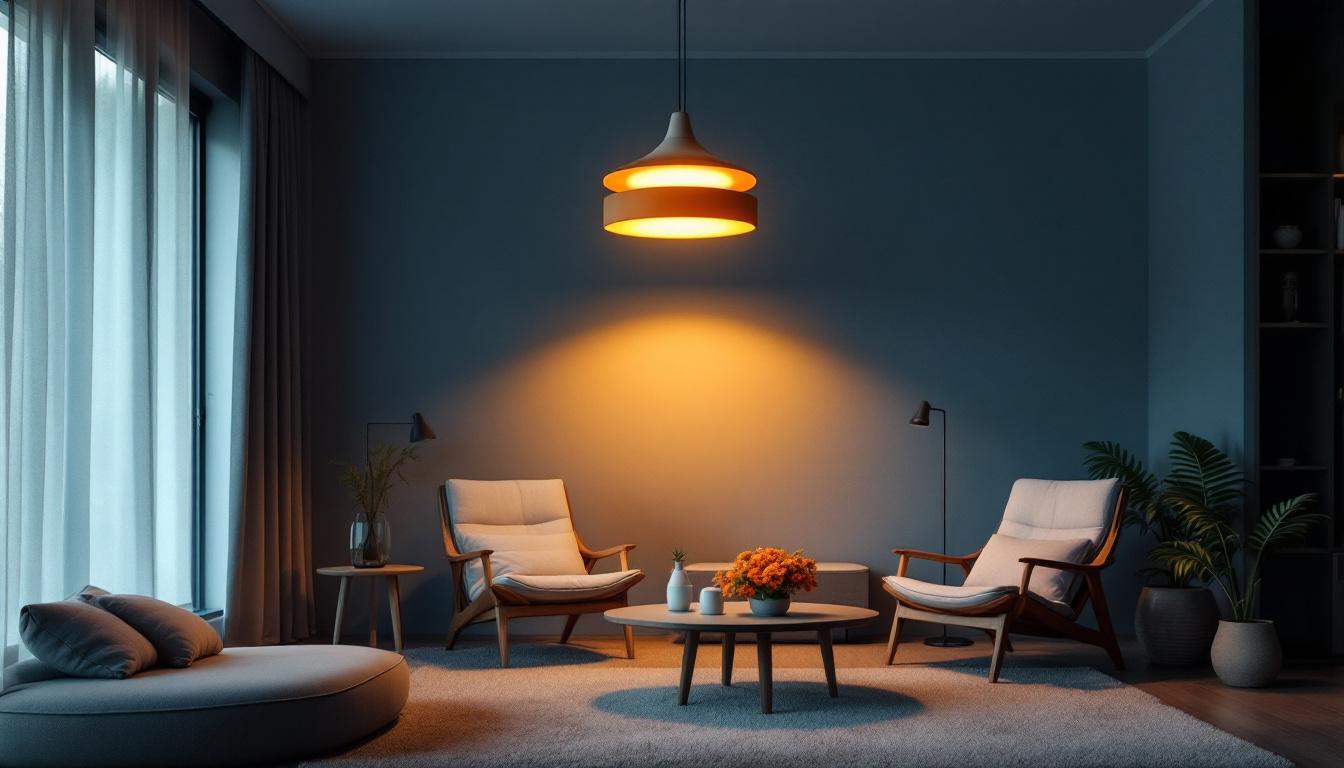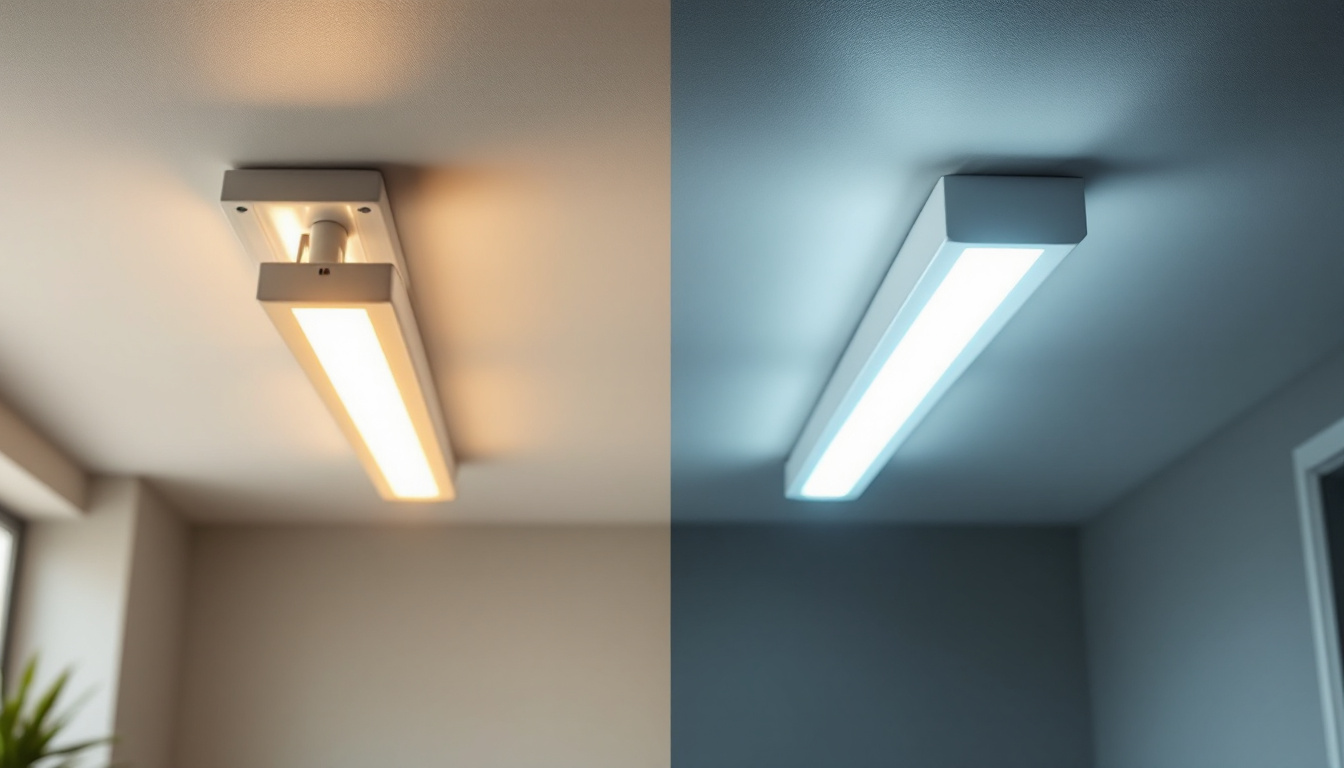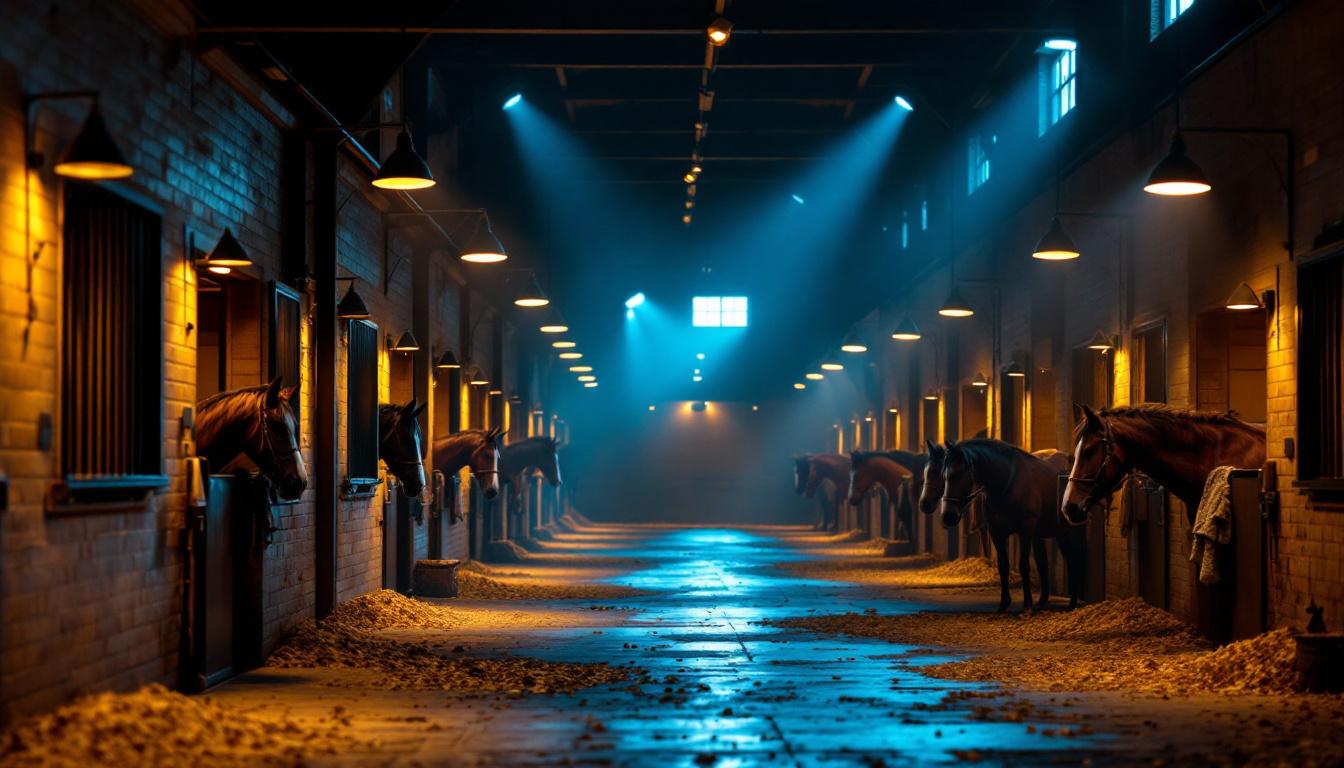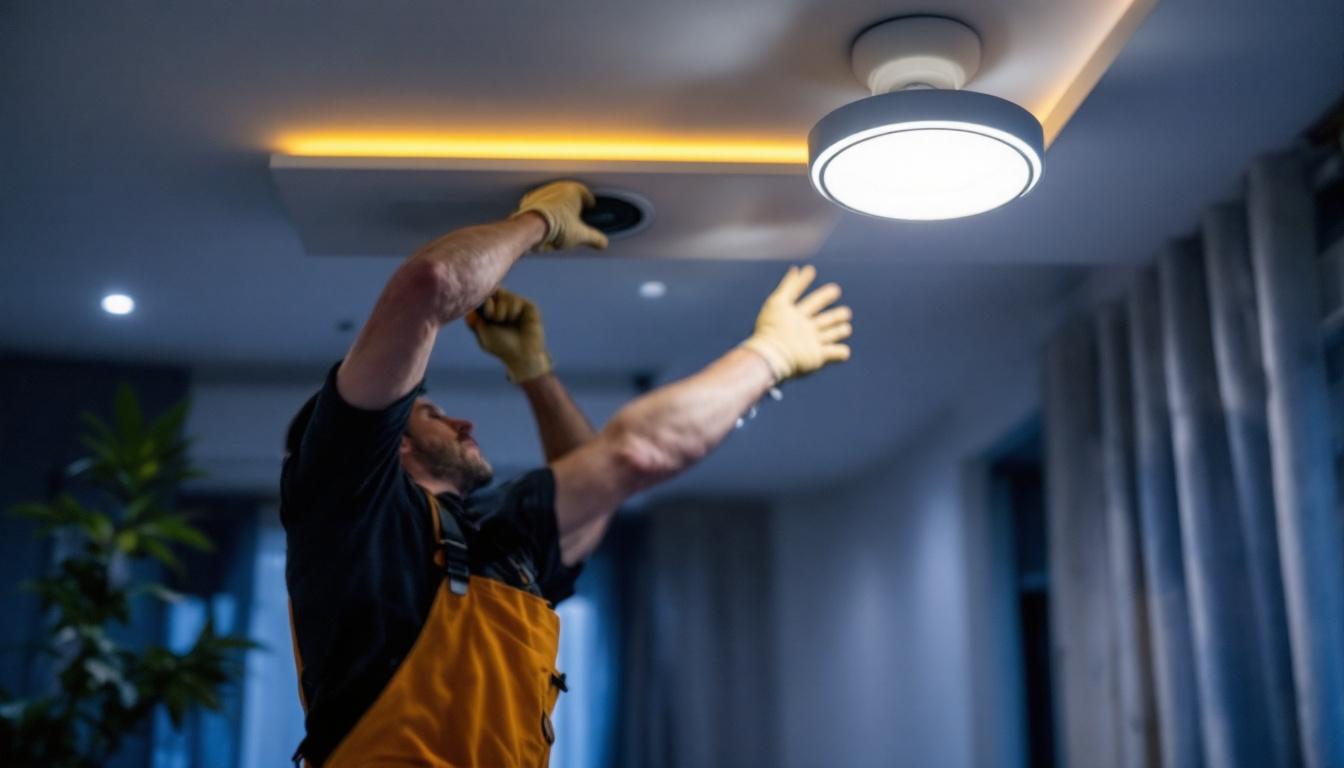
Lighting plays a crucial role in shaping the ambiance of a space. For lighting contractors, understanding the nuances of ambient ceiling lighting can significantly enhance the quality of their projects. This article delves into the top strategies that lighting contractors can employ to optimize ambient ceiling lighting, ensuring that spaces are not only well-lit but also aesthetically pleasing.
Ambient lighting serves as the foundational layer of illumination in any environment. Unlike task lighting, which is designed for specific activities, ambient lighting provides a uniform level of brightness that allows for comfortable visibility throughout a space. It sets the mood and tone, making it essential for both residential and commercial projects. The right ambient lighting can transform a room, creating a warm and inviting atmosphere that encourages relaxation and social interaction. In contrast, poorly executed ambient lighting can lead to harsh shadows and an unwelcoming environment, highlighting the importance of thoughtful design.
One of the most effective strategies in achieving optimal ambient lighting is through layered lighting design. By combining ambient, task, and accent lighting, contractors can create a balanced and versatile lighting scheme. This approach not only enhances the functionality of a space but also adds depth and dimension, making it visually appealing. Layered lighting can also help to highlight architectural features, artwork, or decorative elements, drawing the eye and creating focal points within a room.
Layered lighting allows for flexibility in how a space is used. For instance, a living room may benefit from soft ambient light during the evening, while brighter task lighting can be employed during activities such as reading or working. Understanding how to layer these different types of lighting can elevate the overall design. Additionally, incorporating dimmers into the lighting scheme can provide even more control over the ambiance, allowing occupants to easily adjust the brightness to suit their mood or the time of day.
The selection of fixtures plays a pivotal role in achieving effective ambient lighting. Recessed lighting, flush mounts, and pendant lights are popular choices among contractors. Each type has its unique characteristics and can influence the overall feel of a room. When selecting fixtures, it’s also crucial to consider the color temperature of the bulbs, as warmer tones can create a cozy atmosphere, while cooler tones may lend a more energetic or modern vibe.
Recessed lighting, for example, offers a clean and modern aesthetic, making it ideal for contemporary spaces. On the other hand, pendant lights can serve as focal points, adding character while still providing ambient illumination. It’s essential to consider the scale of the room and the height of the ceiling when selecting fixtures to ensure they complement the space effectively. Moreover, energy-efficient options, such as LED fixtures, not only reduce electricity costs but also have a longer lifespan, making them a sustainable choice for ambient lighting solutions. By thoughtfully selecting and positioning fixtures, designers can create an inviting environment that meets both aesthetic and functional needs.
Once the right fixtures have been chosen, the next step involves proper installation. Lighting contractors must pay attention to several key factors to ensure that ambient ceiling lights perform optimally.
The placement of ambient lighting fixtures is critical. A common mistake is to space fixtures too far apart, leading to uneven lighting and dark spots. Instead, contractors should aim for a balanced distribution of light across the ceiling, which can be achieved by calculating the appropriate spacing based on the wattage of the bulbs and the height of the ceiling.
For instance, a general guideline is to place recessed lights approximately 6 to 8 feet apart in standard ceiling heights. However, this can vary based on the specific design and purpose of the room. By carefully planning the layout, contractors can create a seamless flow of light that enhances the room’s ambiance.
Incorporating dimmer switches is another effective strategy for enhancing ambient lighting. Dimmers allow for adjustable brightness levels, enabling occupants to tailor the lighting to their preferences and the time of day. This flexibility can significantly improve the functionality of a space.
Moreover, dimmers can help save energy and extend the lifespan of light bulbs. By reducing the intensity of the light, contractors can create a more inviting atmosphere, particularly in settings such as dining rooms or bedrooms where softer lighting is often preferred.
The rise of smart home technology has revolutionized the way ambient lighting is controlled. Lighting contractors can leverage this trend to offer clients enhanced convenience and customization options.
Smart lighting systems allow users to control their ambient lighting through smartphones or voice-activated devices. This technology not only offers convenience but also enables users to create lighting scenes that suit different activities or moods. For instance, a homeowner can set a “movie night” scene that dims the lights and adjusts the color temperature for a cozy atmosphere.
Contractors should familiarize themselves with various smart lighting products available on the market. Offering these solutions can set a contractor apart from competitors, providing clients with modern, innovative options for their lighting needs.
As energy efficiency becomes increasingly important, contractors must consider the environmental impact of their lighting choices. LED fixtures are a popular choice for ambient lighting due to their longevity and energy-saving capabilities.
By recommending LED options to clients, contractors can help reduce energy consumption and lower utility bills. Additionally, many LED fixtures now come in various designs, allowing contractors to maintain aesthetic appeal while promoting sustainability.
Each space has its unique requirements when it comes to ambient lighting. Understanding these differences allows contractors to tailor their strategies accordingly.
In residential settings, the goal of ambient lighting is often to create a warm and inviting atmosphere. Living rooms, bedrooms, and dining areas benefit from soft, diffused light that encourages relaxation and comfort.
Using warm color temperatures in ambient lighting can enhance the coziness of a home. Contractors should consider the overall design theme of the space and select fixtures that complement the decor while providing adequate illumination.
In contrast, commercial spaces may require a more functional approach to ambient lighting. Offices, retail stores, and restaurants often benefit from brighter, more focused lighting that enhances visibility and promotes productivity.
For example, in an office environment, ambient lighting should be bright enough to reduce eye strain without being harsh. Utilizing a combination of overhead fixtures and task lighting can create an effective workspace that fosters concentration and efficiency.
Lighting contractors often face challenges when it comes to ambient ceiling lighting. Being aware of these issues and having strategies in place can lead to more successful installations.
Low ceilings can pose a challenge for ambient lighting, as traditional fixtures may overwhelm the space or create an oppressive atmosphere. In such cases, contractors should consider using flush mount fixtures or recessed lighting to maintain a clean look while maximizing headroom.
Additionally, using lighter paint colors on the ceiling can help reflect light and create the illusion of height, making the space feel more open and airy. This strategic approach can significantly enhance the overall ambiance of a room with low ceilings.
Light pollution is another concern that contractors must address, particularly in urban environments. Excessive or poorly directed lighting can contribute to light pollution, which not only affects the aesthetic appeal of a space but can also disrupt the natural environment.
To combat this issue, contractors should focus on using fixtures that direct light downward and minimize glare. Additionally, incorporating outdoor lighting solutions that are sensitive to their surroundings can create a more harmonious balance between artificial and natural light.
As technology and design trends continue to evolve, so too will the strategies for ambient ceiling lighting. Staying informed about these trends can help contractors remain competitive and offer cutting-edge solutions to their clients.
Biophilic design, which emphasizes the connection between humans and nature, is gaining traction in the lighting industry. Incorporating natural elements and patterns into lighting design can enhance the ambiance of a space and promote well-being.
Contractors can explore options such as fixtures that mimic natural light or incorporate organic shapes and materials. By aligning with biophilic design principles, contractors can create environments that foster relaxation and productivity.
The ability to adjust color temperature is becoming increasingly popular in ambient lighting. This feature allows users to shift between warm and cool light, adapting the atmosphere to different times of the day or activities.
Lighting contractors should consider recommending fixtures that offer color temperature variability, as this can enhance the versatility of a space. For example, cooler light may be preferred in the morning to promote alertness, while warmer light can create a calming environment in the evening.
Ambient ceiling lighting is a vital component of any lighting design project. By employing the strategies outlined in this article, lighting contractors can create spaces that are not only functional but also aesthetically pleasing. From understanding the importance of layered lighting to integrating smart technology, these approaches can significantly enhance the quality of ambient lighting installations.
As the industry continues to evolve, staying informed about trends and innovations will empower contractors to deliver exceptional results for their clients. Ultimately, the goal is to create environments that inspire and uplift, making effective ambient lighting an essential aspect of modern design.
Ready to elevate your ambient ceiling lighting projects with the finest selection of spec-grade lighting products? Look no further than LumenWholesale, where we offer an unparalleled combination of quality, affordability, and convenience. Say goodbye to inflated markups and hello to top-quality lighting at wholesale prices. With our hassle-free bulk buying and free shipping, you can trust that you’re getting premium lighting without any hidden fees. Don’t compromise on your lighting needs—choose LumenWholesale for reliable, high-performance lighting solutions that meet the highest industry standards. Start browsing our extensive selection now and experience the best value in wholesale lighting at LumenWholesale.

Discover the transformative benefits of switching from fluorescent lights to LED in your lighting installations.

Discover how outdoor house lights powered by solar energy are transforming the lighting industry.

Discover essential horse barn lighting ideas every contractor should know to enhance safety, efficiency, and comfort.

Discover the frequent pitfalls lighting contractors encounter with LED recessed dimmable lights.